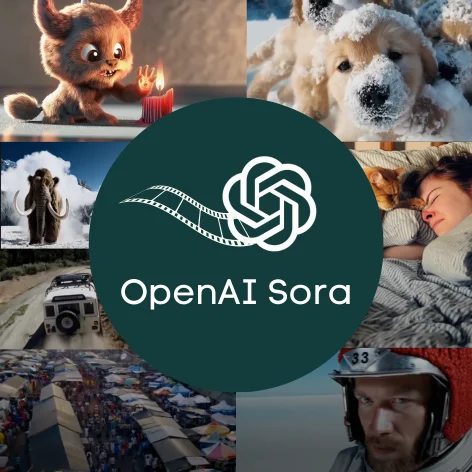A new OpenAI invention is here, OpenAI Sora. If you watch one of the Sora videos not knowing it is AI-generated, you may not doubt its realness. In this blog post, we’ll delve into Sora’s capabilities, weaknesses, safety measures, and the OpenAI Sora release date. Stay tuned for this exciting technology that promises to revolutionise the world of video-making forever.
OpenAI Sora
Just days ago, OpenAI introduced its latest technology, Sora, leaving us in admiration and excitement. From ChatGPT’s text generation to DALL-E’s image creation of text prompts, now, with the introduction of Sora, OpenAI adds yet another invention to its lineup.
How Does Sora AI Work?
Sora is a text to video model that’s learning to simulate the physical world in motion, producing high-quality videos lasting up to a minute. The model is capable of creating detailed scenes with multiple characters, while preserving the coherence of the subject and background in the scene.
Sora can generate multiple scenes from a generated video keeping the details, visual styles and textures. Also, with its language knowledge, it can understand the prompts very well giving accurate results.
Take a look at this video uploaded on OpenAI’s YouTube channel showcasing some videos generated by Sora given different prompts.
Is OpenAI Sora Available
Now that you know about this exciting new development you might be asking “can I use Sora OpenAI?” Currently, Sora isn’t accessible to the general public. However, it’s available to specific groups, such as red teamers (experts in areas like misinformation and bias) and a selected number of visual artists, filmmakers, and designers.
OpenAI has granted access to these individuals to gather feedback from outside sources, aiming to improve the model. This is all we know so far yet there is no official OpenAI Sora release date.
Sora Weaknesses
The current version of this OpenAI text to video tool does have its limitations. For instance, it may struggle with accurately depicting complex scenes and understanding cause-and-effect relationships.
Additionally, the model may occasionally confuse spatial details, such as left and right orientation. As an example, in this Sora video, you can notice the left and right legs being mixed up at the 0:15 second mark:
OpenAI Sora Safety
OpenAI is promising to take several safety steps before making Sora available to the public, like building tools to detect misleading content and rejecting prompts with violence, sexual content, hateful imagery, and celebrity likeness.
The company has stated its commitment to working with policymakers, educators, and artists worldwide to address their worries and explore the positive uses of this new technology. OpenAI emphasises the need to understand both the good and bad ways people might use Sora.
frequently asked questions
Currently, Sora is undergoing tests by a selected group of individuals and is not yet available for public use.
there is currently no information available regarding the pricing of Sora. However, we anticipate that the pricing model will be similar to that of the DALL-E model.
While CEO Sam Altman is credited as the creator of Sora AI, it’s important to recognise that Sora was developed by a large team of professionals in the field. You can find the names of these individuals on the official website.
Final Thoughts
A great advancement in the AI world, OpenAI Sora challenges our perception of what’s real. Sora AI’s potential to revolutionise the video-making industry is undeniable. It represents a significant step towards a future where the boundaries between imagination and reality are blurred, promising exciting possibilities for filmmakers, designers, and audiences alike.







